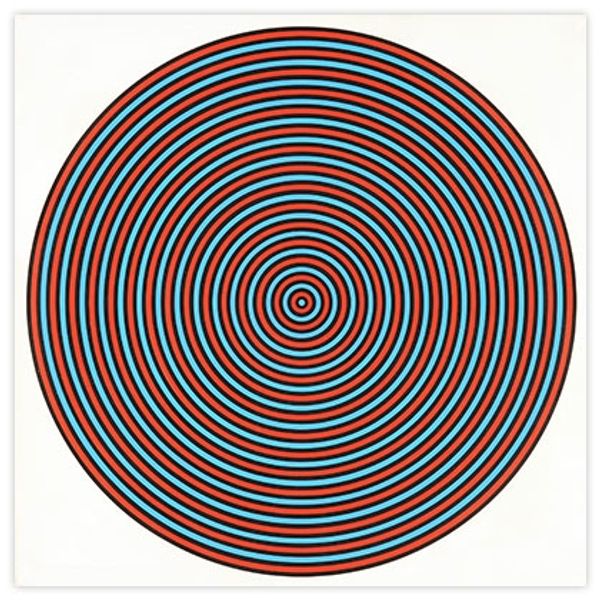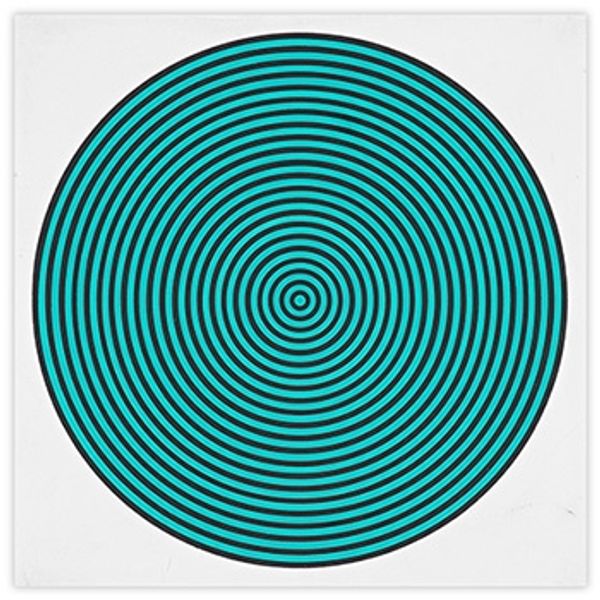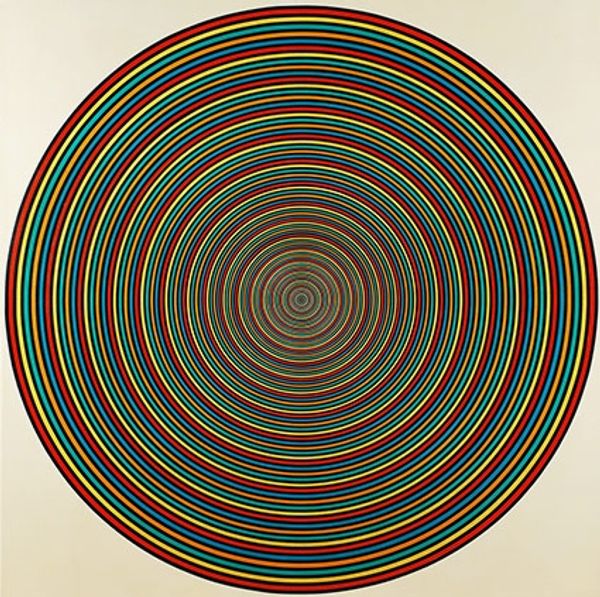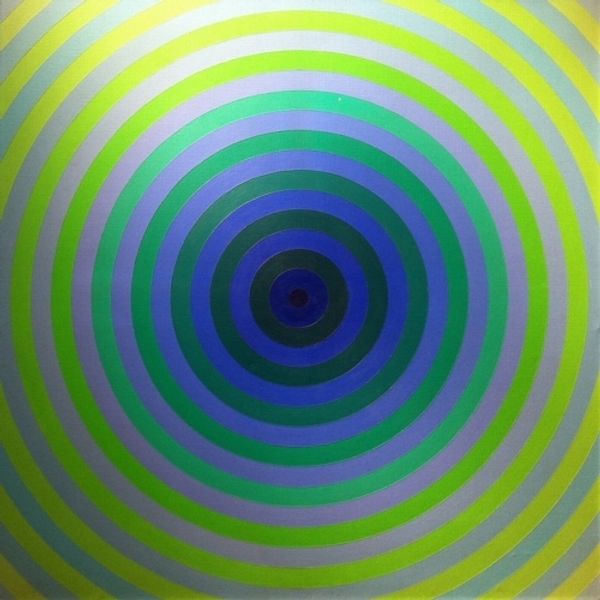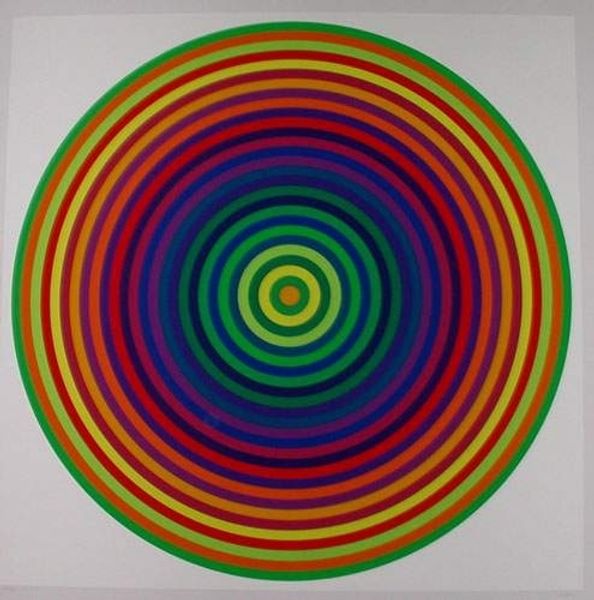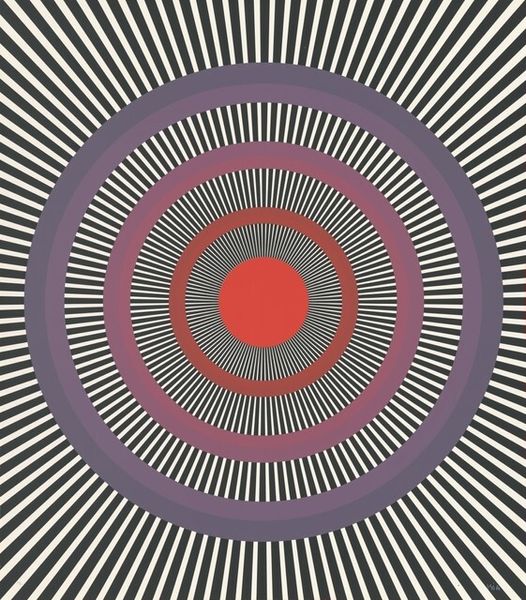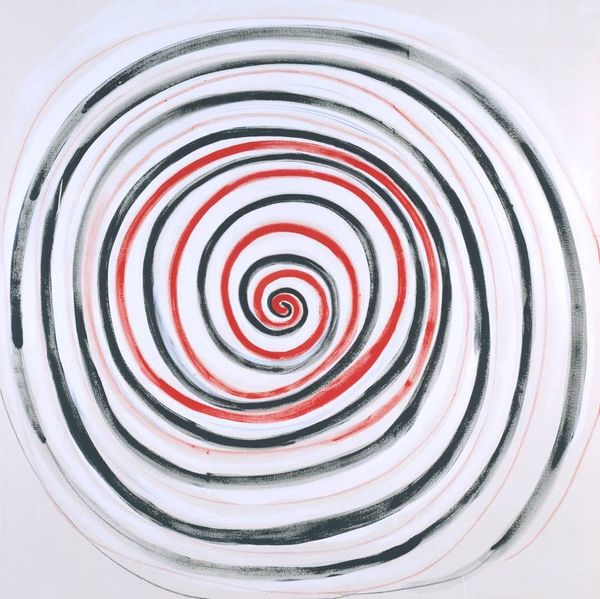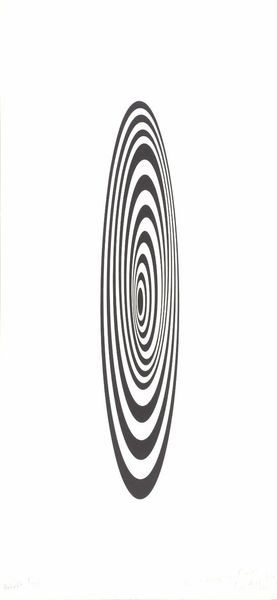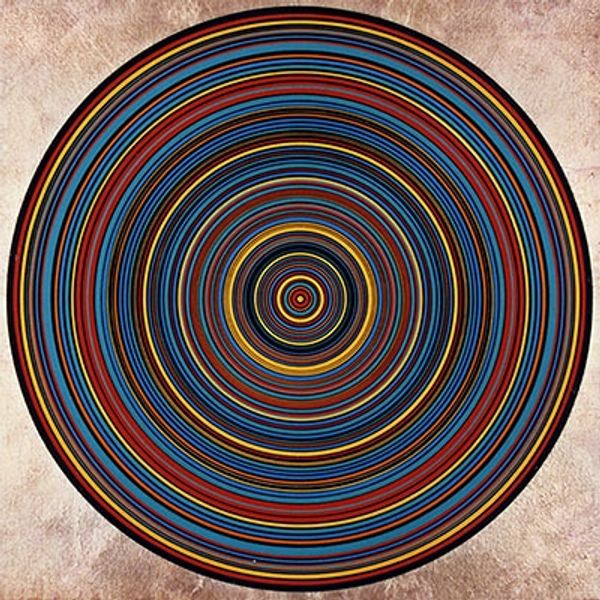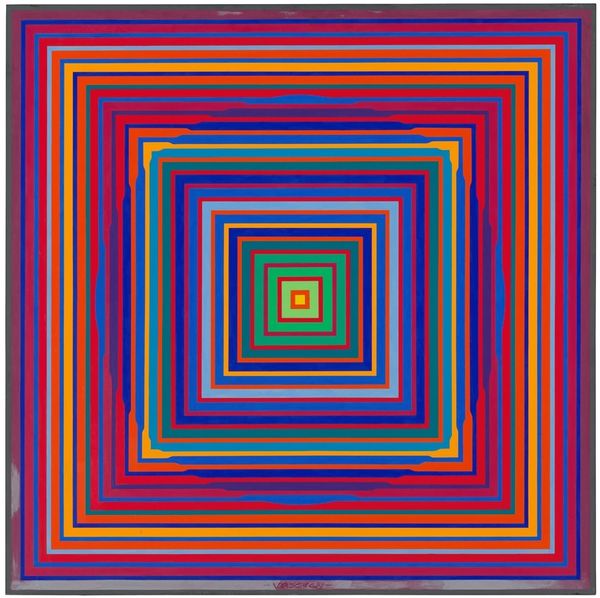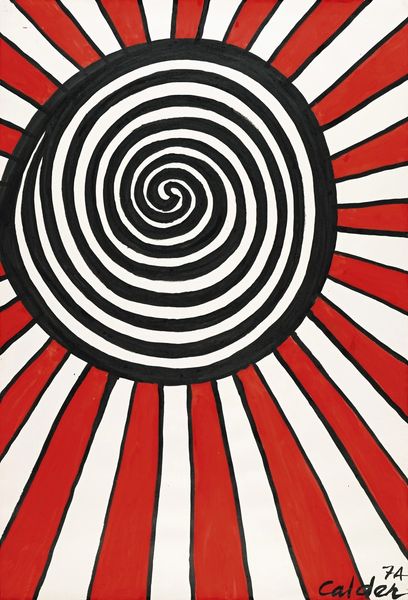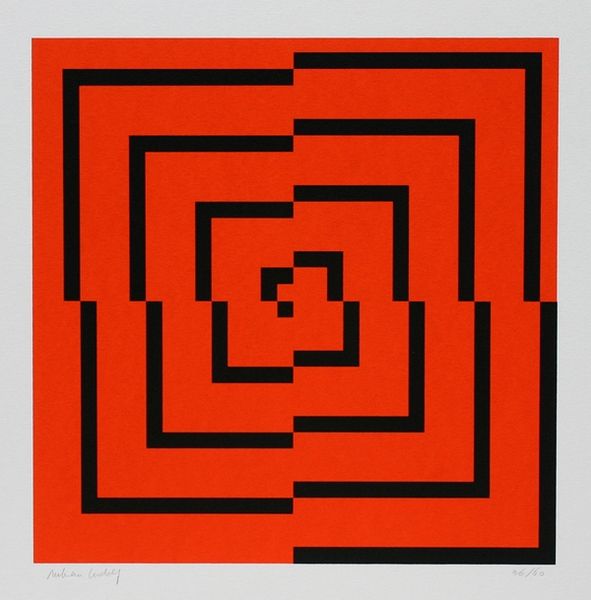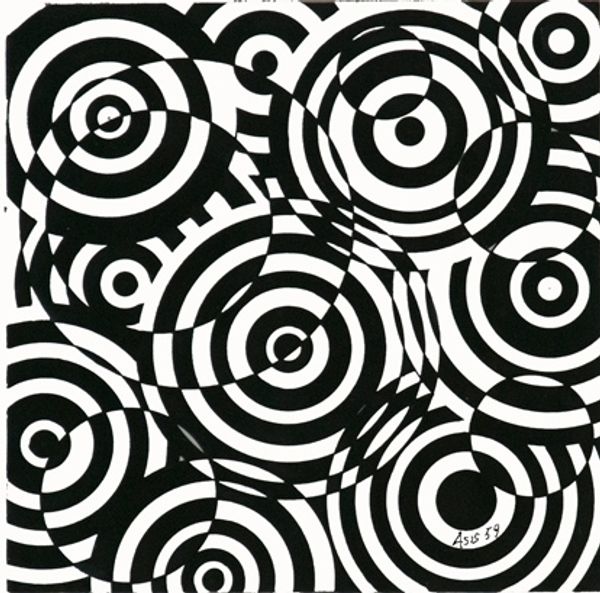
acrylic-paint
#
random pattern
#
op-art
#
circle
#
acrylic-paint
#
geometric pattern
#
minimal pattern
#
organic pattern
#
geometric
#
simple pattern
#
repetition of pattern
#
abstraction
#
line
#
pattern repetition
#
funky pattern
#
combined pattern
#
modernism
#
hard-edge-painting
#
repetitive pattern
Copyright: Tadasky,Fair Use
Editor: Here we have Tadasky’s “C 133a” from 1965, made with acrylic paint. The red and black concentric circles create this mesmerizing, almost dizzying effect. What's striking to me is how static yet visually active it feels. What do you see in this piece? Curator: What I find particularly interesting is the context of Op Art within the broader socio-political landscape of the 1960s. Op Art emerged as a movement that often rejected traditional artistic representation, opting instead for abstraction and optical illusions. Given the backdrop of social upheaval, the Vietnam War, and burgeoning counter-culture movements, this art seems to reflect a desire to challenge conventional ways of seeing, not just in art but in life. Editor: So, it's almost a visual parallel to the societal questioning of the time? Curator: Precisely. Museums and galleries, often seen as establishments of cultural authority, began exhibiting Op Art, thereby legitimizing and giving it a public voice. This also brings into play questions of the institutional role in shaping artistic movements, and how displaying such works may have served to engage or perhaps even pacify the societal unrest through visual stimulation. Consider its creation in 1965; how might the minimalist geometry serve as a symbolic language during the Cold War, suggesting rigid order or even concealed meaning? Editor: I never really considered the Cold War angle before; it does give a totally different spin to such simple geometry. Thanks, I'll have to look at this differently now. Curator: Indeed, the brilliance is often in the layers beneath the visual surface. This is what keeps art history compelling, always uncovering new interpretations in the dialogue between art, history and society.
Comments
No comments
Be the first to comment and join the conversation on the ultimate creative platform.
